This article delves into the intricacies of mass embroidery digitization, exploring the processes, technologies, and considerations involved in streamlining production for optimal efficiency and quality.
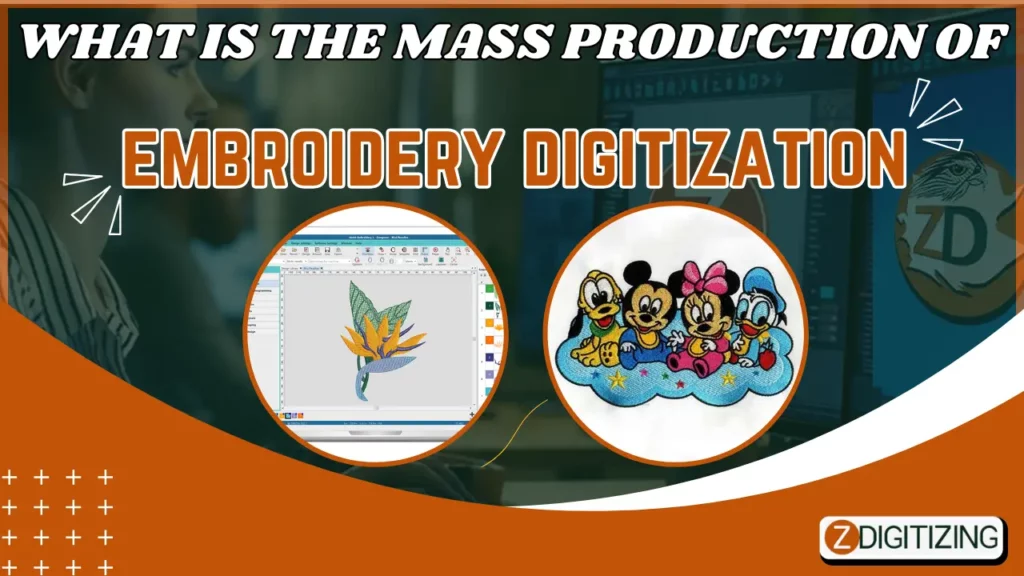
Embroidery digitization has become an integral part of the computerized embroidery mass production industry, enabling the efficient and precise reproduction of intricate custom embroidery designs on a large scale.
TMEZ-SC Series Embroidery Machine Review With Pros And Cons
Mass Production Of Embroidery Digitization:
Let’s dive deep into the mass production of embroidery digitization:
Automated Design Conversion:
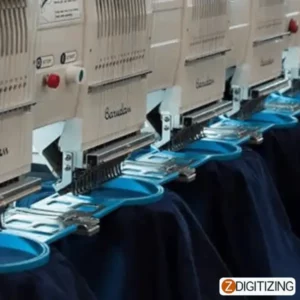
Production of mass embroidery digitization relies heavily on automated custom embroidery designs conversion processes. Advanced software programs are utilized to convert design files, such as vector artwork or scanned images, into digitized embroidery files. These programs analyze the machine embroidery design elements, assign appropriate stitch types, and generate stitch codes that dictate the embroidery machine’s movement.
Batch Processing:
Efficiency in mass production is achieved through batch processing. Computerized embroidery designs are grouped together based on factors like size, color, or design complexity. By grouping similar machine embroidery designs, the digitizing process can be streamlined, optimizing machine setup, and reducing production time.
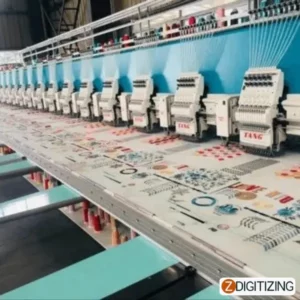
Standardized Parameters:
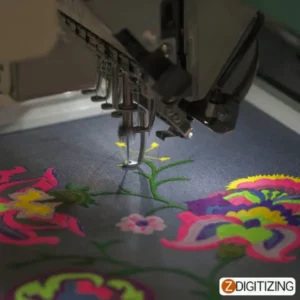
To maintain consistency across production, standardized parameters are established for various design elements. These parameters include factors such as stitch density, underlay techniques, stitch length, and thread color assignments. By establishing these standards, it becomes easier to replicate designs accurately across different production batches.

Machine Compatibility:
In mass production, compatibility between the digitized designs and embroidery machines is crucial. Embroidery machines vary in their capabilities and limitations, such as maximum stitch count, hoop sizes, or thread color availability. Designers and digitizers must consider these machine-specific requirements to ensure seamless production and avoid potential issues during the embroidery process.
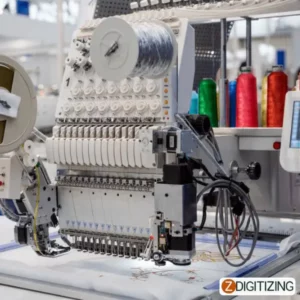
Quality Control Measures:

Maintaining quality control is essential in mass production. Regular checks are conducted to ensure that the digitized designs accurately represent the original artwork, with no missing or misaligned stitches. Quality control teams review sample stitches, test different fabrics, and evaluate production results to identify and address any issues that may arise.

Collaboration and Communication:
Effective collaboration and communication among designers, digitizers, and production teams are vital for successful mass production of embroidery digitization. Clear communication channels are established to relay design specifications, production timelines, and any necessary adjustments. This collaborative approach ensures that all parties are aligned and working towards the same goal of delivering high-quality digitized designs efficiently.
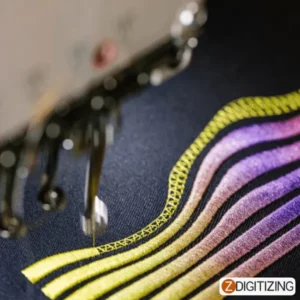
Efficient File Management:
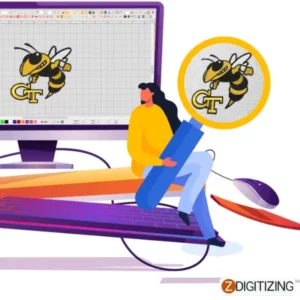
Efficient file management systems are implemented to handle large volumes of digitized designs. Categorizing and organizing designs by project, customer, or production batch allows for easy retrieval, updating, and reuse of designs in subsequent production runs. This streamlined file management process reduces time wasted searching for files, enhancing overall production efficiency.

Scalability and Flexibility:
Mass production requires the ability to scale production volumes based on demand. Digitized designs should be adaptable to different sizes, garment types, and embroidery locations. Flexibility in adjusting design parameters ensures that the digitized files can be seamlessly applied to a wide range of products, accommodating varying production requirements.

Embroidery Digitizing
&
Vector Art Services
Are you looking for embroidery digitizing and vector art services at low cost with superfast turnaround, guaranteed quality and preview before pay? So, you are at right place. We can digitize and vectorize any type of artwork in your required file format.
Production Planning and Scheduling:
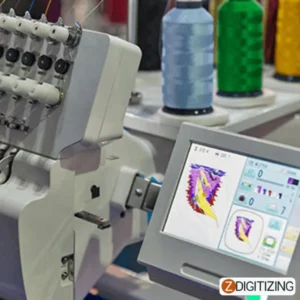
Efficient production planning and scheduling play a crucial role in mass production. By strategically allocating resources, determining production capacities, and optimizing workflow, businesses can maximize productivity and minimize downtime between production runs.
Quality Assurance Testing:
Regular quality assurance testing is essential to ensure that the embroidered products meet the desired standards. This involves inspecting samples from each production batch, assessing stitch quality, color accuracy, and overall design fidelity. Any deviations or issues can be identified and addressed promptly to maintain consistent quality.
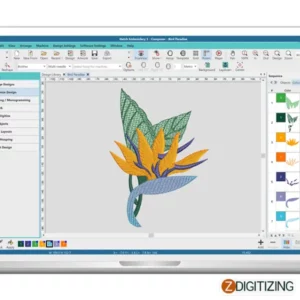
Material and Thread Management:
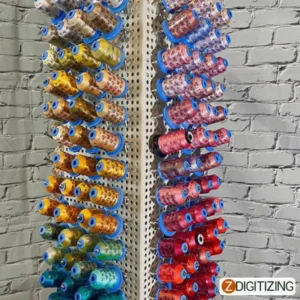
In mass production, proper management of materials and thread is critical. Establishing efficient inventory management systems ensures that the necessary fabrics, threads, and other supplies are readily available. This minimizes production delays and helps maintain consistency in the final embroidered products.

Training and Skill Development:
Skilled digitizers and machine operators are key to successful mass production of embroidery digitization. Providing comprehensive training programs and ongoing skill development opportunities for the production team ensures they are equipped with the knowledge and expertise to handle complex designs, troubleshoot issues, and operate embroidery machines efficiently.
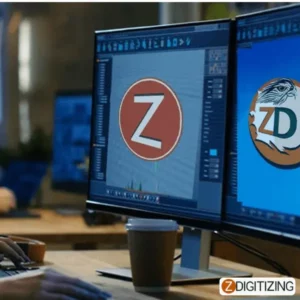
Production Monitoring and Reporting:

Implementing systems to monitor and track production progress is crucial for effective management. Real-time monitoring allows businesses to identify bottlenecks, track productivity, and make data-driven decisions to improve efficiency. Detailed production reports provide insights into production volumes, timelines, and quality metrics, facilitating continuous improvement.

Tips To Consider For Mass Embroidery Digitization:
Here are some tips to consider for mass production in embroidery digitization:
- Establish clear guidelines and specifications for design elements such as stitch types, densities, underlay techniques, and color assignments. This ensures consistency across production batches and streamlines the digitizing process.
- Streamline machine setup by grouping similar designs together based on size, color, or complexity. This reduces downtime between production runs and improves overall efficiency.
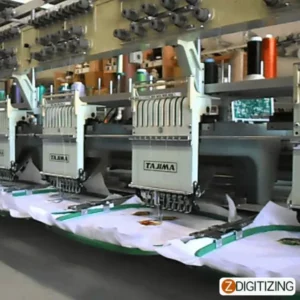
- Utilize advanced digitizing software that offers efficient design conversion and editing capabilities. This enhances productivity and ensures accurate replication of designs across different production runs.
- Build a library of digitized designs categorized by design type, customer, or product. This allows for easy retrieval and reuse of designs, saving time and effort in future production runs.
- Properly calibrated and well-maintained embroidery machines ensure consistent stitch quality and prevent potential production issues. Implement a maintenance schedule to keep the machines in optimal condition.
- Implement thorough quality control checks throughout the production process. Inspect sample stitches, monitor color accuracy, and review production results to identify and address any issues promptly.
- Establish effective communication channels between digitizers, production teams, and other stakeholders. This ensures clear and timely communication of design specifications, production timelines, and any necessary adjustments.
- Develop a systematic file management system to organize and categorize digitized design files. This facilitates easy access, updates, and reuse of designs, enhancing overall production efficiency.
- Adopt lean manufacturing principles to eliminate waste, reduce production lead times, and optimize workflow. This includes practices such as value stream mapping, 5S organization, and continuous improvement initiatives.
- Encourage ongoing skill development and training for digitizers and machine operators. Stay updated with the latest advancements in embroidery digitization and provide opportunities for professional growth within the production team.
- Continuously evaluate production processes, monitor key performance indicators, and solicit feedback from employees and customers. Identify areas for improvement and implement changes to enhance efficiency and quality.
- Place customer satisfaction at the forefront by ensuring consistent quality, meeting production deadlines, and providing exceptional customer service. Happy customers contribute to repeat business and positive referrals.
Winding Up:
The mass production of embroidery digitization offers the opportunity to efficiently replicate intricate designs on a large scale. By harnessing advanced software, standardized parameters, efficient production workflows, and effective communication, businesses can achieve high levels of productivity while maintaining quality control. Embracing automation, collaboration, and streamlined processes, the mass production of embroidery digitization continues to shape various industries, from apparel and textiles to promotional products and beyond.
If you are looking to digitize your embroidery designs, ZDigitizing is a reliable and professional company that provides complete digitizing and vector art services worldwide.
With a quick turnaround time and excellent quality, ZDigitizing is a great choice for your digitizing needs. You can click the link below to get a free quote in less than 5 minutes and avail a 50% discount on all our services for potential customers on their first order.
Hope it will be helpful for you guys!
If there’s any question related to this article you can simply ask in the comment section and don’t forget to share with those you think might be helpful for them.
And finally, thanks for reading!
FAQ ( Frequently Asked Questions )
The cost to digitize embroidery can vary depending on factors such as design complexity, size, and the embroidery service provider. On average, digitizing can range from $10 to $100 or more per design. It’s best to contact embroidery service providers directly to get an accurate quote based on your specific design requirements.
The cost of embroidery is typically calculated based on the stitch count, which refers to the number of stitches required to complete the design. Embroidery service providers often charge per thousand stitches, with prices ranging from $0.50 to $3.00 or more per thousand stitches. Multiply the stitch count by the per-thousand-stitch rate to calculate the cost of embroidery for your design.
To get your design digitized for embroidery, you can rely on professional digitizing services like Zdigitizing. They offer embroidery digitizing services worldwide at reasonable costs. By utilizing the Zdigitizing services, you can have your designs professionally digitized for embroidery, ensuring high-quality results and timely delivery worldwide.












